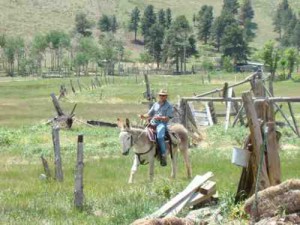Brief by Allen Best
Environment – January 2009 – Colorado Central Magazine
Decades after they closed, the mines near Colorado mountain towns continue to demand attention.
Breckenridge has begun operating a $1.2 million water-treatment plant that is supposed to remove the zinc, cadmium and lead that contaminate the water coming from the Wellington-Oro Mine. The Wellington, explains the Summit Daily News, was the largest mine in Summit County from the 1880s to the 1930s. Mining there did not finally cease until 1972, or 11 years after the Breckenridge ski area began operating.
Summit County’s government and the Town of Breckenridge purchased the site as part of an 1,800-acre open space parcel. Breckenridge intends to operate the treatment plant at a cost of $90,000 annually. The solid waste is to be delivered to a smelter, which will process the zinc and cadmium for the manufacture of batteries.
Two mountain ridges away at Gilman, located near Vail, the official launch of the Eagle Mine cleanup began 20 years ago. The former zinc, silver and lead mine had contaminated the Eagle River so badly that it killed fish and most other aquatic life. At first, the cleanup was botched, and in the 1990-91 ski season the snow produced at nearby Beaver Creek was orange, because it was drawn from the same river.
Later, fish returned to the Eagle downstream from the mine, but pollution levels remain somewhat elevated. “This was never the kind of site where it’s like, ‘Oh, you’re done,'” the Environmental Protection Agency’s Jennifer Chergo told the Vail Daily.
But the bottom line is that after $80 million and 20 years of cleanup, acid-mine drainage from the old workings within the bowels of Battle Mountain continue to pollute the Eagle River. Even now, the river has no sculpin, the native fish in that segment of the river. There are brown trout, but they are not native.
A water treatment plant along the river near the old mine has been operating since the early 1990s at a cost of more than $1 million a year.


